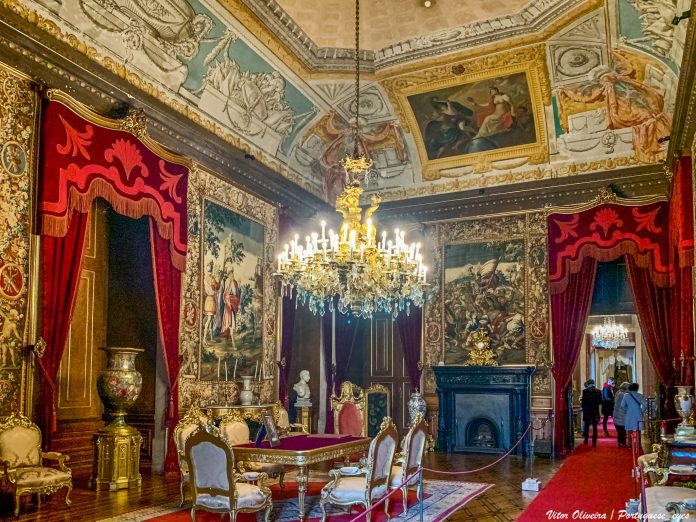The National Palace of Ajuda is a neo-classical structure from the early 19th century that is one of the most prominent monuments in Lisbon. This palace once served as the residence for the Portuguese royal family from King D. Luís I’s reign (1861-1889) until the monarchy’s end in 1910. Let’s take a look at the history behind the National Palace of Ajuda, its architecture, and what you need to know to visit.
History
The National Palace of Ajuda was built in the early 19th century as the royal residence for the Portuguese royal family. Originally, the royal family planned to move from the Ribeira Palace to Ajuda Palace after the 1755 earthquake, but unforeseen events, like the Napoleonic invasion, caused delays.
After the Napoleonic invasion and the Portuguese royal’s family transfer to Brazil, the palace experienced a time of neglect. It wasn’t until the return of the royal family to Portugal in the 1820s that efforts to restore and expand the palace began.
The Portuguese royal family only officially settled in the National Palace of Ajuda in the mid 19th century. Over the years, the palace witnessed important events in Portuguese history, including royal weddings, celebrations, political gatherings, and cultural activities.
The palace was closed down in 1910 following the establishment of the Republic and the subsequent exile of the royal family. It reopened its doors as a museum in 1968 and still preserves the typically 19th-century room arrangement and decoration.
After the Republic was established in 1910, the palace closed down, and the royal family was exiled. However, in 1968, it was transformed into a museum and reopened to the public.
Architecture
The architecture of the National Palace of Ajuda is a beautiful blend of neoclassical and baroque styles. Its façade features elegant columns and decorative designs that show the palace’s grandeur.
Inside, you can find luxurious living spaces, lavish halls, and intricately designed rooms filled with ornate decorations and beautiful artwork. These rooms were designed by Joaquim Possidónio da Silva (1806-1896) and followed the most recent trends of the time which still can be seen displayed.
One of the palace’s remarkable highlights is the Throne Room, where Portuguese kings and queens held their official ceremonies.
Despite facing damage during the 1755 earthquake and undergoing further restorations, the National Palace of Ajuda has retained its historical charm and architectural splendor.
Currently, the Palace is home to significant collections of decorative arts from the 18th and 19th centuries. These collections include a wide range of items such as gold and silverware, jewelry, textiles, furniture, glassware, and ceramics.
Visiting Times & Tickets
The palace is open from Thursdays to Tuesdays from 10 am to 6 pm (last entrance is at 5:30 pm). It is closed on Wednesdays, January 1, Easter Sunday, May 1, and Christmas. Tickets start at 5 euros, with a 50% discount available for seniors, students, youth card holders, and family tickets.
Related Tours


